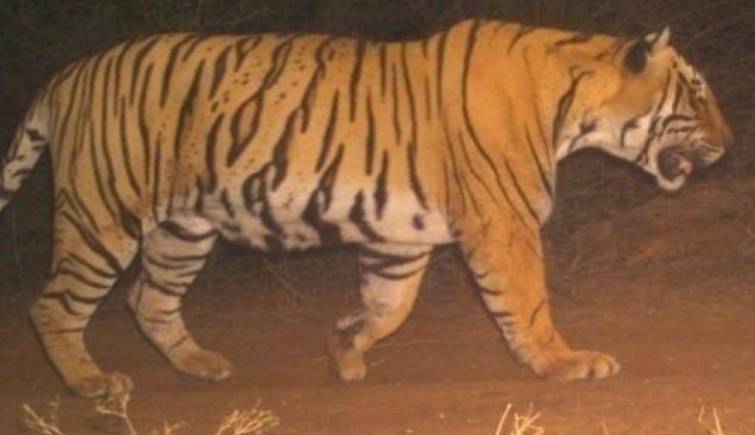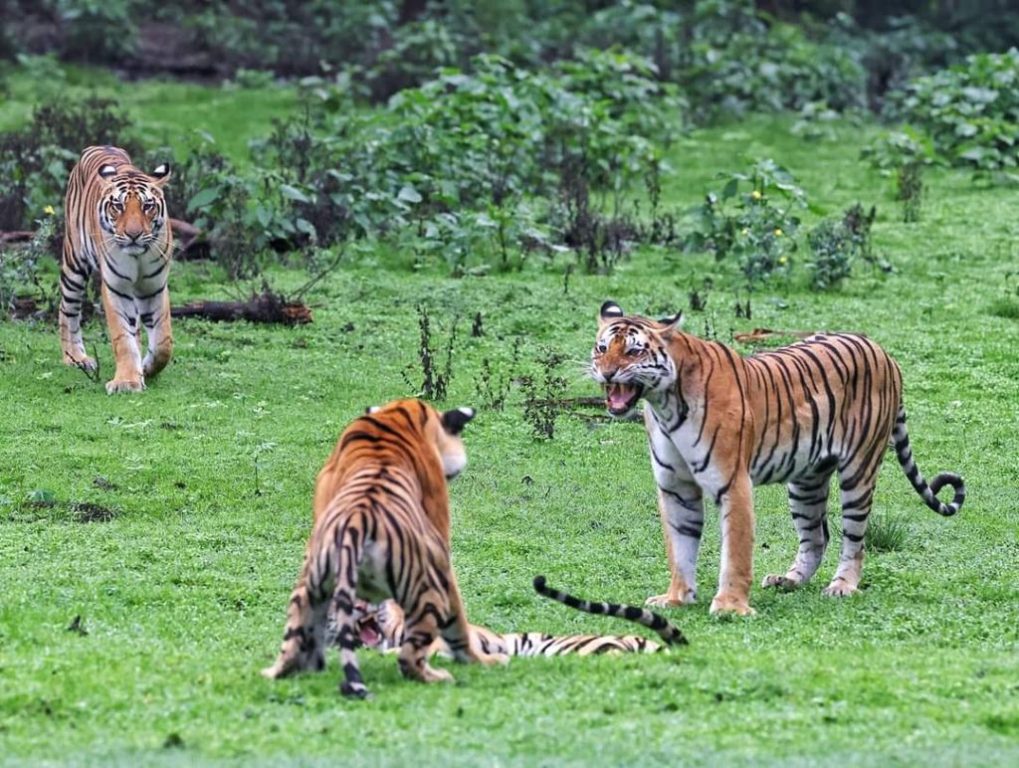With 100 tiger straddling the four tiger reserves spread across eight districts in Rajasthan, the state government wants to enhance their territory to one more tiger reserve spread in 10 more districts.
After the havoc of 2004 when tiger population was completely wiped off from Sariska Tiger Reserve, the state government has upped the ante to protect the national animal. Despite various challenges, including shortfall of prey in many areas, the number of tigers have crossed 100 in the state.
Currently, there are four tiger reserve in the state – Ranthambore (Sawai Madhopur), Mukundra (Kota), Sariska (Alwar) and recently created Ramgarh
Vishdhari Tiger Reserve (RVTR) in Bundi which has a capacity of 35 tigers.
RVTR will link the Ranthambore
Tiger Reserve in the Northeast and the Mukundra Hill Tiger Reserve on the Southern side. The Rajasthan government and forest department are now planning to reestablish the tiger population in 10 more districts with the announcement of Dholpur as its fifth tiger reserve.
Indian Masterminds spoke to Additional Principal Chief Conservator of Forests and Chief Wildlife Warden of Rajasthan Mr. Arindam Tomar to know about the roadmap of the plan and the challenges that will follow.
30 YEARS TARGET
Currently, tigers are inhabiting right district – Sawai Madhopur, Karauli, Dholpur, Bundi, Jaipur, Kota and Jhalawar. They are also possibly transient in Dausa, Tonk, Bhilwara, Baran and Chittorgarh districts.
The corridors in these areas are identified and functional to some extent. Mr. Tomar said, “Other areas in southern and northern Rajasthan are proposed to be linked through corridors to enable tigers to recover their historical ranges in Rajasthan.”

Bringing back the tigers to their historical home is a long term perspective of about 30 years.
Asked how the department was planning to achieve this feat, he said, “Declaration of tiger reserves and protected areas, enhancement of management intensity, developing corridors and ancillary activities are being taken up to provide safe space.” Reintroduction of tigers in all these areas is one option while natural dispersal will also be promoted.
MAN-ANIMAL CONFLICT
Man-animal conflicts has been a great challenge in Rajatshan. In the past decade, tigers killed at least 14 persons, as compared to two in the 30 years preceding it. In such a scenario, when providing more space to tigers look a good option why declare new reserves?
Mr. Tomar said, “We are devoting effort on improving the geography of our protected areas and improving corridors to minimize the conflict.” He also emphasized that the target is not easily achievable.
A long list of challenge await them
which will include getting public support, resources and personnel.






























